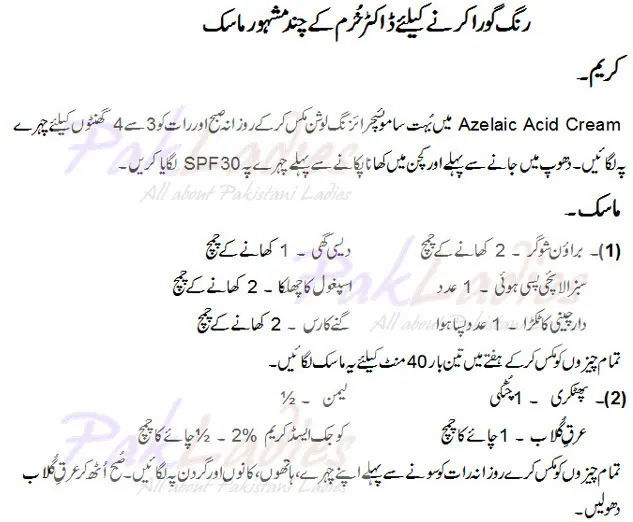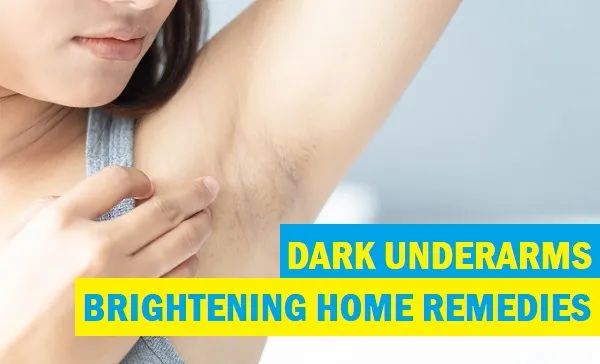Understanding Underarm Hyperpigmentation
Underarm hyperpigmentation, or the darkening of the skin in the underarm area, is a common cosmetic concern. It occurs when the skin produces more melanin, the pigment responsible for skin color. This increased melanin production can lead to a noticeable darkening of the underarms, which can range from a slight discoloration to a much more pronounced change. Many factors contribute to this condition, including genetics, lifestyle choices, and external irritants. Understanding the root causes of hyperpigmentation is the first step toward finding effective solutions and restoring an even skin tone. Various treatments are available, from simple home remedies to more advanced clinical procedures, each with its own set of benefits and considerations. The key is to identify the underlying causes and choose a treatment plan that suits your skin type and preferences. Furthermore, adopting a consistent skincare routine can prevent recurrence and maintain the desired results.
Causes of Dark Underarms
Several factors can contribute to the darkening of underarms. One of the most common causes is the use of certain deodorants and antiperspirants. Many of these products contain chemicals that can irritate the skin, leading to inflammation and, subsequently, increased melanin production. Another major contributor is the method of hair removal. Shaving, for instance, can cause friction and irritation, and over time, this can result in hyperpigmentation. Other hair removal methods, such as waxing, can also lead to skin irritation, especially if not done correctly or if the skin is sensitive. In addition to these factors, certain medical conditions, like Acanthosis Nigricans, can also cause dark patches in the underarms. Hormonal changes, such as those that occur during pregnancy or due to conditions like Polycystic Ovary Syndrome (PCOS), can also play a role. Furthermore, genetics can predispose individuals to hyperpigmentation. Finally, friction from tight clothing and even certain skin infections can exacerbate the problem. It’s important to identify these triggers to effectively treat and prevent future darkening.
Shaving and Hair Removal Methods

The way you remove underarm hair significantly impacts the skin’s health and appearance. Shaving, while convenient, can often lead to irritation, ingrown hairs, and subsequent hyperpigmentation. The razor’s blade can cause micro-cuts and inflammation, triggering melanin production and darkening the skin over time. Waxing, on the other hand, removes hair from the root, offering longer-lasting results. However, waxing can also irritate the skin, especially if done frequently or if the skin is sensitive. It’s crucial to use proper techniques and pre and post-waxing care to minimize irritation. Laser hair removal is another option that provides a more permanent solution by targeting hair follicles with concentrated light. While it can be effective, it can also be expensive and requires multiple sessions. Epilation is another method that pulls hair out from the root using an electric device. This can lead to irritation as well. Choosing the right method depends on your skin type, pain tolerance, and desired results. Consider the long-term impact on your skin health.
Deodorants and Antiperspirants
The ingredients in deodorants and antiperspirants can significantly influence underarm skin tone. Many products contain chemicals such as alcohol, fragrances, and aluminum-based compounds that can irritate the sensitive underarm skin. Alcohol can dry out the skin, leading to irritation and inflammation. Fragrances can trigger allergic reactions or contact dermatitis, contributing to discoloration. Aluminum-based compounds, commonly used in antiperspirants to block sweat ducts, can also lead to irritation and, in some cases, hyperpigmentation. Switching to hypoallergenic or natural deodorants can help mitigate these issues. Look for products free of harsh chemicals, alcohol, and artificial fragrances. Natural deodorants often contain ingredients like baking soda, essential oils, and other skin-friendly components that can help neutralize odor without causing irritation. When choosing a deodorant, it’s essential to consider your skin type and any sensitivities. Patch-testing new products on a small area of skin is a good practice to ensure they don’t cause adverse reactions.
Top Home Remedies for Underarm Whitening
Several natural remedies can help lighten and brighten underarms. These treatments typically involve ingredients with skin-lightening properties, such as lemon juice, turmeric, and aloe vera. Home remedies offer a gentler approach compared to some clinical treatments, making them a great starting point. Consistency is crucial for achieving noticeable results, as these remedies often require regular application over several weeks or months. While they can be effective, it’s important to manage expectations and be patient. It’s also essential to consider potential sensitivities and perform patch tests before applying any new remedy to the entire underarm area. Combining these remedies with good hygiene practices and a consistent skincare routine can maximize their effectiveness. Always moisturize after using these remedies to keep the skin hydrated and prevent dryness. Remember, results can vary based on individual skin types and the severity of hyperpigmentation.
Lemon Juice and Baking Soda

Lemon juice and baking soda are popular remedies known for their skin-lightening properties. Lemon juice contains citric acid, a natural bleaching agent that can help exfoliate the skin and reduce dark spots. Baking soda is a mild abrasive that can help remove dead skin cells, contributing to a brighter complexion. To use this remedy, mix lemon juice with baking soda to create a paste. Apply the paste to the underarms, let it sit for about 15-20 minutes, and then rinse thoroughly with water. Lemon juice can cause skin sensitivity to the sun, so it is best to apply this remedy in the evening and to avoid sun exposure immediately after treatment. Perform a patch test first to ensure you don’t have any adverse reactions. If irritation occurs, discontinue use. For best results, repeat this treatment a few times a week.
Turmeric and Yogurt
Turmeric and yogurt create a powerful combination for underarm whitening due to their anti-inflammatory and skin-brightening properties. Turmeric contains curcumin, which has antioxidant and anti-inflammatory effects. Yogurt contains lactic acid, a gentle exfoliant. Mix turmeric powder with plain yogurt to form a thick paste. Apply this paste to the underarms, let it dry for about 20-30 minutes, and then rinse it off with water. This remedy helps to reduce inflammation and brighten the skin. It’s particularly gentle and suitable for those with sensitive skin. Regular use can improve skin tone and texture. Applying this mask two to three times a week can yield visible results. Remember to use plain, unsweetened yogurt for the best results and to avoid staining, consider wearing old clothes when applying the mask.
Potato Slices
Potato slices are a surprising yet effective home remedy for underarm whitening. Potatoes contain natural bleaching properties that can help lighten the skin. Cut a fresh potato into thick slices and rub them directly on the underarms for about 15-20 minutes. Alternatively, you can grate a potato and apply the pulp. The potato’s natural enzymes work to gently lighten the skin and reduce dark spots. Rinse the area with cool water after the treatment. This method is gentle and suitable for all skin types. Repeat this treatment daily for best results. Potatoes also help to soothe the skin, reducing irritation and promoting a more even skin tone. This is a simple, cost-effective, and readily available solution. Consistent use over time can contribute to noticeable improvements in underarm skin tone.
Aloe Vera

Aloe vera is renowned for its soothing and healing properties, and it can also contribute to underarm whitening. The gel from the aloe vera plant contains vitamins, minerals, and antioxidants that can help to lighten and moisturize the skin. Apply fresh aloe vera gel directly to the underarms and leave it on for about 20-30 minutes. Rinse thoroughly with water. Aloe vera can also help reduce inflammation and soothe irritated skin. It’s particularly beneficial after hair removal to calm the skin and prevent irritation. This treatment is gentle and suitable for daily use. Consistent application helps to improve skin tone and texture, promoting a healthier and brighter underarm area. Aloe vera is a versatile remedy that complements other treatments well. Consider using it in combination with other methods for enhanced results.
Coconut Oil
Coconut oil is a natural moisturizer with skin-lightening properties. It contains vitamin E, which helps repair and rejuvenate the skin. Applying coconut oil to the underarms can help to lighten the skin and keep it moisturized. Apply a small amount of coconut oil to the underarms and massage gently for a few minutes. Leave it on for about 15-20 minutes before rinsing. Regular use helps to improve skin tone and texture. Coconut oil is also a good option for reducing friction and preventing irritation. It’s gentle and suitable for daily use. For enhanced results, consider mixing coconut oil with a few drops of lemon juice or turmeric. However, always perform a patch test first, as some individuals may be sensitive to coconut oil. Consistent use, combined with other remedies, can maximize the lightening effect.
Step-by-Step Guide to Applying Remedies
To maximize the effectiveness of home remedies, it’s essential to follow a systematic approach. The process includes preparing the skin, applying the remedy, and maintaining a consistent application schedule. Each step plays a critical role in achieving the desired results. Ensuring the skin is clean and exfoliated will allow the remedy to penetrate better and deliver the active ingredients more efficiently. Regular use is crucial to see visible improvements. Additionally, it is important to choose the right remedies based on skin sensitivity and desired results. Consistent application, coupled with proper skin care, will significantly improve the effectiveness of the remedies and lead to better results. Here’s a detailed guide to help you get the best results from these treatments.
Preparing Your Skin

Before applying any home remedy, it’s crucial to prepare the skin to ensure optimal absorption and effectiveness. Begin by gently washing the underarm area with a mild cleanser to remove dirt, oil, and any traces of deodorant or antiperspirant. Exfoliation is also a vital step in preparing the skin. Exfoliating helps to remove dead skin cells that can block the pores and prevent the active ingredients from penetrating effectively. You can use a gentle scrub made from sugar and olive oil or a commercially available exfoliating product designed for sensitive skin. Gently massage the scrub onto the underarm area for a minute or two, and then rinse thoroughly with lukewarm water. Pat the area dry with a soft towel before applying the chosen remedy. Preparing your skin in this way enhances the effectiveness of the treatment and improves the overall results.
Applying the Remedy
After preparing your skin, apply the chosen home remedy carefully. If using a paste-like remedy, such as a turmeric and yogurt mask, apply a thin, even layer to the underarm area. Ensure the entire affected area is covered. If you are using a slice of potato or a lemon, gently rub it over the underarms for the recommended duration. When applying liquids or gels, such as aloe vera or lemon juice, use a cotton ball or your fingertips to apply an even layer. Let the remedy sit on the skin for the recommended time, typically 15-30 minutes, depending on the specific remedy. Avoid applying too much of the remedy at once to prevent irritation. Follow the specific instructions for each remedy to ensure you are using it correctly and effectively. After the application time, rinse the area thoroughly with water and gently pat it dry.
Frequency and Duration
Consistency is key when using home remedies. The frequency of application depends on the remedy you are using and your skin sensitivity. Generally, most remedies can be applied 2-3 times per week. Some gentler remedies, like aloe vera or coconut oil, can be applied daily. However, monitor your skin for any signs of irritation. The duration of treatment will vary depending on the severity of the hyperpigmentation and the effectiveness of the remedy. It’s important to be patient, as it may take several weeks or months to see noticeable results. Keep a record of your treatments and any changes you observe. If you are not seeing any improvement after several weeks, you might need to adjust your approach, try a different remedy, or consult a dermatologist. Regular application and consistency are critical to achieving the desired results and maintaining an even skin tone. Avoid over-treating your skin.
Tips for Faster Results

While home remedies can be effective, certain strategies can help you achieve faster results. These include exfoliating regularly, keeping the area moisturized, and choosing clothing that minimizes friction. Combining these strategies with the use of home remedies will significantly enhance the effectiveness and speed of treatment. Lifestyle adjustments, such as avoiding harsh chemicals and choosing the right hair removal methods, can also contribute to faster and more noticeable results. Here’s a closer look at these tips to help you accelerate your progress and achieve brighter, more even-toned underarms.
Exfoliation is Key
Exfoliation is a critical step in speeding up the underarm whitening process. Regular exfoliation helps remove dead skin cells, which can trap melanin and cause the skin to appear darker. By removing these cells, you allow the skin-lightening remedies to penetrate more effectively. Use a gentle scrub made with natural ingredients like sugar and olive oil, or opt for a commercial exfoliating product suitable for sensitive skin. Exfoliate the underarm area one to two times per week, using a circular motion to gently massage the scrub into the skin. This not only promotes cell turnover but also improves blood circulation, contributing to a brighter complexion. Avoid over-exfoliating, as this can lead to irritation. Always moisturize after exfoliating to keep the skin hydrated and prevent dryness. Consistent exfoliation, coupled with the use of home remedies, can significantly improve your results.
Moisturizing Regularly
Keeping the underarm area moisturized is crucial for promoting skin health and accelerating the whitening process. Dry skin can exacerbate hyperpigmentation, and it can also make the skin more prone to irritation and inflammation. Apply a fragrance-free, hypoallergenic moisturizer daily, especially after showering or exfoliating. Look for moisturizers containing ingredients like hyaluronic acid, glycerin, or ceramides, which help to hydrate and repair the skin’s natural barrier. Regular moisturizing keeps the skin supple, reduces dryness, and supports the effectiveness of whitening treatments. Make sure to choose a moisturizer that suits your skin type. Keeping the area moisturized helps to maintain the skin’s overall health. Consistent moisturizing will lead to better and faster results.
Choosing the Right Clothing

The type of clothing you wear can significantly impact the appearance of your underarms. Tight clothing can cause friction, leading to irritation and potentially worsening hyperpigmentation. Opt for loose-fitting clothing made of breathable fabrics like cotton or linen. These materials allow air circulation, reducing friction and preventing sweat buildup, which can contribute to skin darkening. Avoid synthetic materials that can trap sweat and exacerbate irritation. Wearing light-colored clothing can also help, as it reflects sunlight and minimizes the impact of sun exposure on the underarm area. Choosing the right clothing minimizes friction and irritation. Making mindful choices in your wardrobe can support and enhance the results from your treatments. Proper clothing choices play an important role in preventing further darkening.
Important Considerations and Precautions
While home remedies can be effective, it’s important to approach them with caution and awareness. Always perform a patch test before applying any new remedy to the entire underarm area. This involves applying a small amount of the remedy to a small area of skin and waiting for 24-48 hours to check for any adverse reactions, such as redness, itching, or irritation. If you experience any negative side effects, discontinue use immediately. Be mindful of the potential for skin sensitivity, especially with ingredients like lemon juice or baking soda. If you have sensitive skin, use these remedies with caution and dilute them with water. Avoid sun exposure after applying remedies, as some ingredients can increase the skin’s sensitivity to sunlight. Always follow the instructions carefully and do not exceed the recommended application times or frequencies. By taking these precautions, you can minimize the risks and safely achieve your desired results.
When to See a Dermatologist
While home remedies can be beneficial, there are times when seeking professional medical advice from a dermatologist is necessary. If your hyperpigmentation is severe, widespread, or not improving with home remedies, it’s best to consult a dermatologist. A dermatologist can accurately diagnose the underlying cause of your hyperpigmentation and recommend more effective treatments. They can assess your skin type and recommend suitable treatments, such as prescription-strength creams, chemical peels, or laser treatments. If you suspect your hyperpigmentation is linked to an underlying medical condition, like Acanthosis Nigricans or a hormonal imbalance, consult a dermatologist or a healthcare professional. If you experience any concerning symptoms, such as severe irritation, pain, or changes in the skin, seek immediate medical attention. Consulting a dermatologist can help you get more effective solutions and ensure you are addressing the underlying issues that are contributing to the hyperpigmentation. Don’t hesitate to seek professional help when needed.
